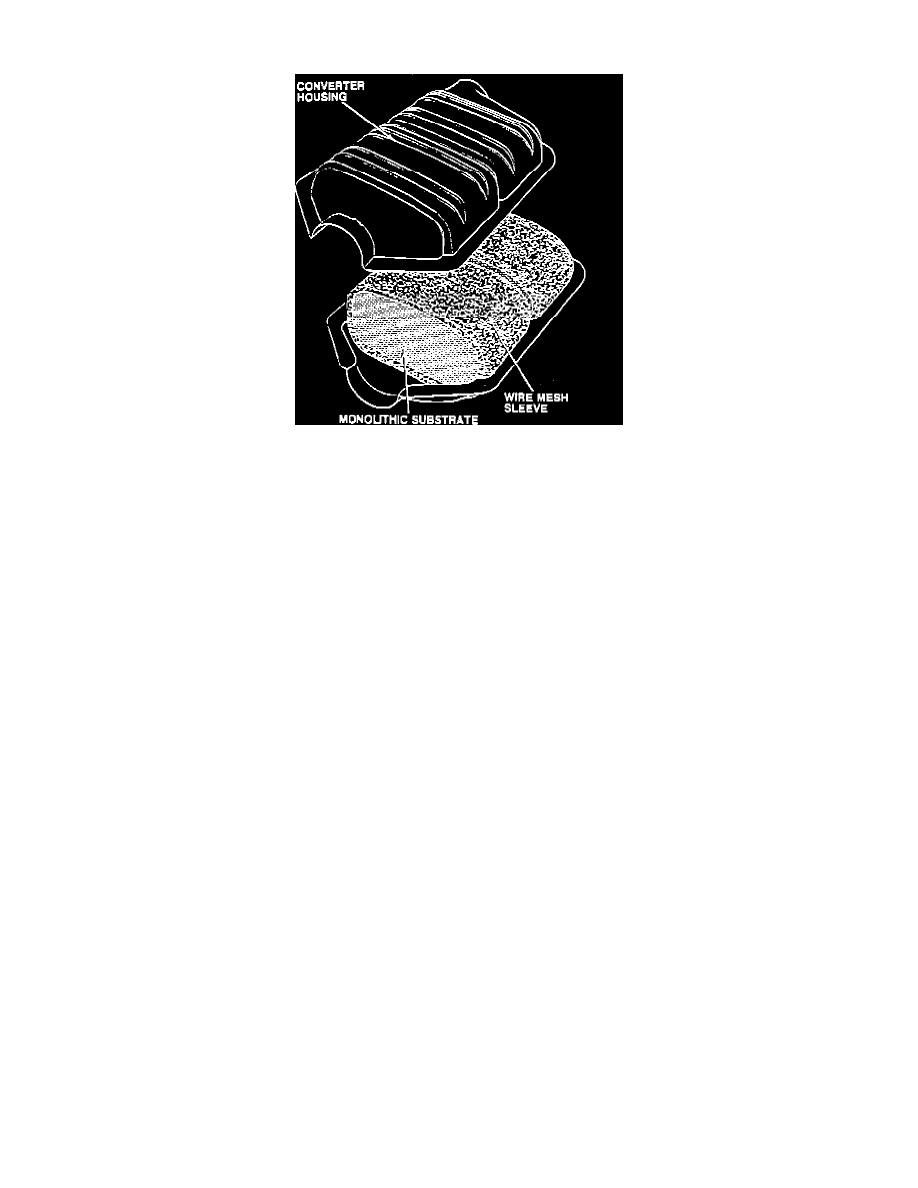D50/Power Ram 50 V6-181 3.0L SOHC (1991)

Catalytic Converter: Description and Operation
Catalytic Converter
The Catalytic Converter is a device, within the exhaust system, that converts harmful pollutants, Carbon Monoxide (CO), Hydrocarbons (HC), and
Oxides of Nitrogen (NOx), into harmless by-products, Nitrogen (N), Carbon dioxide (CO2) and water vapor (H2O) through a catalytic chemical
reaction. The catalyst elements ((platinum, palladium, and/or rhodium) are deposited on to a monolithic (honeycomb) substrate, contained within the
converter housing.
THE OXIDATION REACTION
In order to change HC and CO into harmless materials, the catalytic elements (platinum and palladium) start an oxidation, or burning, reaction in the
catalytic converter. Oxidation is the addition of oxygen to an element or compound. If there is not already enough oxygen in the exhaust, a secondary
air supply system is incorporated into the vehicle's design. During the oxidation process Oxygen (O2) mixes with the HC and CO to form H2O and
CO2.
Considerable heat is generated during the oxidation reaction, 900°F to 1,600°F. Caution should be taken while working on or around the catalytic
converter.
THE REDUCTION REACTION
NOx control requires a separate reaction. Reduction is the opposite of oxidation, or the chemical removal of oxygen from a material. The reduction
reaction changes NOx to harmless nitrogen (N) and (CO2) by chemically moving the oxygen from the NOx to the CO compound. The catalytic
elements required for the reduction process are platinum and rhodium.
Engine malfunctions such as mis-firing can increase exhaust gas temperatures which can cause the substrate to melt resulting in the destruction of the
converter. The use of leaded fuels should also be avoided. Lead in the exhaust residue will coat the catalyst substrate preventing the catalytic reaction.
Excessive oil residues in the exhaust can also poison the catalyst.
Refer to VEHICLE DAMAGE WARNINGS under SERVICE PRECAUTIONS for more precautions.
